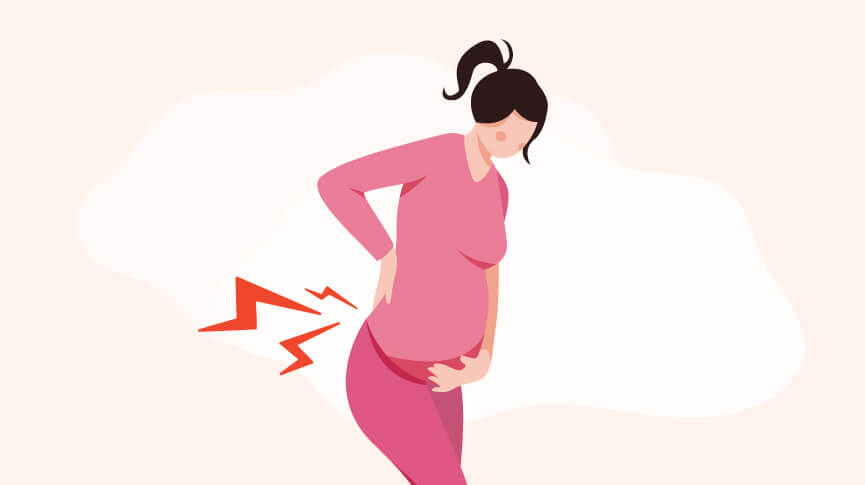False Labor: What Are Braxton-Hicks Contractions?

Pregnancy. What a wild ride. Your body is growing, stretching, softening, and doing all sorts of other things that may be new territory to you. Not only that, but you’re experiencing plenty of new sensations. ‘Was that foot pressing on my liver?’, ‘Are you having a party in there while I’m trying to sleep?’, ‘Hiccups…inside of me?!’. Lots of fun, and not so fun, things are going on with your body. One of the biggest things pregnant people are concerned about is labor, birth, and…contractions. Contractions are the body’s way of opening and softening the cervix, which is the passageway between the uterus and the vagina. This is necessary for a vaginal birth. The other role of contractions is to push the baby down through the pelvis and out the vagina. People who have a cesarean section may still experience contractions if they happen to go into early labor before the surgery, or if they have a last-minute or emergency c-section after already being in labor.
Contractions don’t just happen when the baby is about to come out though. Some people experience contractions for weeks, sometimes months, before they actually go into labor. These early contractions are called Braxton-Hicks. What exactly are Braxton-Hicks contractions? Can you do anything to ease the discomfort? And when should you contact your medical provider? Let’s find out!
Braxton-Hicks 101
Braxton-Hicks contractions can be exciting and/or alarming – especially for first-time parents. You may think you need to speed-dial your medical providers, grab your birth bag, and hit the ground running, but hold tight for a second (your uterus sure is). Braxton-Hicks contractions often called prodromal or false labor, are your body’s way of preparing for the journey ahead – real labor. This is because unlike contractions during labor, Braxton-Hicks don’t typically cause changes to the cervix. Although some experts suggest that while they don’t dilate the cervix, they may play a role in softening it, which is also necessary for a vaginal birth. Another role of Braxton-Hicks is that they may promote blood flow to the placenta, the baby’s source of nutrients and oxygen.
People tend to notice Braxton-Hicks around the third trimester of pregnancy, although they may start sooner. They tend to increase in frequency and intensity towards the end of pregnancy. Not only that, typically pregnant people experience more intense Braxton-Hicks contractions with each subsequent pregnancy.
What Do Braxton Hicks Contractions Feel Like?
Braxton-Hicks are often described as feeling like mild menstrual cramps. What’s actually happening in the body is that the muscle fibers in the uterus are tightening and relaxing. While they’re typically painless, they can feel uncomfortable. They tend to be concentrated in the abdomen and can make your belly feel tight. Braxton-Hicks are unpredictable, usually lasting 30 to 90 seconds, and do not follow a pattern. True Braxton-Hicks become weak then disappear, only to show up again another time.
Can You Do Anything About Braxton-Hicks?
While some discomfort is a given in pregnancy, there are things you can do to ease Braxton-Hicks contractions. The triggers for Braxton-Hicks are typically being very active, very full, having sex, or being dehydrated. With this in mind, here are some to ease Braxton-Hicks contractions:
- Change positions by going for a walk, or laying down.
- Stay hydrated, drink a lot of water, you can even try coconut water or aloe vera juice.
- Rest on your left side if possible.
- Relax with a bath, a massage, cuddling, or taking a nap.
Still feeling discomfort? It’s important to know what to look out for so that you know when to contact your healthcare provider.
When to Call Your Provider
How do you know the difference between Braxton-Hicks and real contractions? Here are some signs you might be going into labor:
- Real labor is usually more intense than Braxton-Hicks
- You feel pressure in your lower back and pelvis.
- Your contractions are getting stronger, longer, or closer together.
- You can’t walk or talk through contractions.
- You’re having strong contractions every five minutes for an hour.
- You have watery discharge or signs of your water breaking.
Other things to watch out for along with contractions are:
- Vaginal bleeding
- Diarrhea
- Regular contractions before 37 weeks, which may be a sign of preterm labor.
- Upper abdominal pain, usually under the ribs on the right side, can be a sign of preeclampsia.
- Pain and discomfort in the lower abdomen as well as burning with urination, a sign of a Urinary Tract Infection.
It’s always better to be safe than sorry, so trust your intuition. If you feel like you want to talk to your provider or go in to see them, by all means, do so. This is one of the big benefits of having a support person like a doula, who can answer your questions before turning to your medical providers.
You’re Having a Baby!
Whether you’re at the beginning or end of your pregnancy or are hoping to become pregnant – congratulations and welcome. Educating yourself on what’s going on with your body and what your choices are for birth and beyond is one of the best gifts you can give yourself. Ready to learn more about this wild journey? We’re here to answer your questions about what the stages of labor are if you can eat during labor, tools like hypnobirthing, and how to heal from a vaginal or belly birth, aka cesarean section.
You got this!

Natasha (she/her) is a full-spectrum doula and health+wellness copywriter. Her work focuses on deconstructing the shame, stigma, and barriers people carry around birth, sex, health, and beyond, to help people navigate through their lives with more education and empowerment. You can connect with Natasha on IG @natasha.s.weiss.


